Women in STEM: The stories of six Clemson science and mathematics alumni
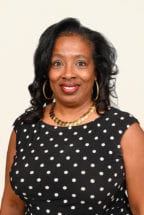
When Elizabeth Baxley was in medical school, she was one of just four women in her class. When she was in residency, she was one of three.
“We had to be pioneers and pave a way. We had to work harder and prove ourselves more,” said Dr. Baxley, who earned an undergraduate degree in zoology from Clemson University in 1980 before she attended the University of South Carolina School of Medicine.
Since then, the number of women pursuing – and succeeding – in medicine and STEM fields has increased.
Representation matters, said Luna Bozeman, who earned a Bachelor of Science degree in mathematics from Clemson University’s School of Mathematical and Statistical Sciences in 2018.
“When you don’t see people like you succeeding or even being in a STEM field, it can be dissuading,” she said.
Bozeman remembers a Computer Science 101 class she took during her first semester at Clemson. She was one of only a handful of women in the class. Unconsciously, she felt added pressure to prove she belonged there.
“The more women are represented in STEM fields, the less there will be of that kind of pressure,” said Bozeman, a technical trainer for the analytics software company SAS. “Representation truly does matter. We need different perspectives coming in to help push us forward in innovation advancements. We need women to go into STEM fields and succeed in them.”
These Clemson science and mathematics alumni are doing just that.
Mother and daughter
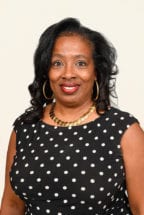
When Jameica Byers Hill began working on her Ph.D. in chemistry at Clemson, she didn’t picture herself in academia. Instead, she thought she’d be working in research and development for a large company.
That all changed when she started teaching undergraduate labs.
“I enjoyed it and people told me I was good at it,” said Hill, who earned her Ph.D. in 1993 and is now a professor and chemistry department chair at Wofford College in Spartanburg, South Carolina.
Now she works every day to increase the number of women pursuing and entering science careers. Diversity in STEM benefits everyone, she said. “One might think it difficult to address diversity in such an empirical discipline such as chemistry. But I am very intentional in my efforts—using inclusive language, spotlighting diverse scientists and providing students with micro affirmations to instill a ‘you can do this’ attitude in my students.”
Want it all
“We’ve done a good job with the number of women pursuing science degrees, but the number of women in certain STEM careers doesn’t reflect that,” Hill said.
Some disconnect could be because of traditional family roles.
“In essence, we want to have it all,” Hill added. “We want a career, and we want a family. We can have it all, but we might not have it all at the same time.”
Hill said it is important for women to see other women in science careers.
“If you see somebody like you in a role, you can see yourself in that role,” she said.
Our brains aren’t that inherently different than men’s. I think it’s more about how we are presented with information from a very young age of what we can do. Men have never had the issue of thinking they can’t do something. When women feel the same way growing up, I think we’ll see the gap close naturally.”
Shelby Hill
Hill’s daughter, Shelby Hill, had a built-in role model. But Jameica wasn’t why Shelby pursued a degree from the College of Science’s Department of Chemistry. It was her high school AP Chemistry teacher.
“My mom actually had nothing to do with my decision to pursue chemistry. We never talked about me being a scientist,” Shelby said. “I had a really awesome teacher in high school. Chemistry differed from what you typically learn in high school. For instance, math builds on what you learn each year. Chemistry was something completely new.”
But Mom instilled in her the idea that she could do anything.
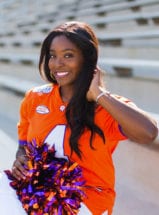
“Our brains aren’t that inherently different than men’s. I think it’s more about how we are presented with information from a very young age of what we can do. Men have never had the issue of thinking they can’t do something. When women feel the same way growing up, I think we’ll see the gap close naturally,” Shelby Hill said.
Shelby is pursuing a Ph.D. in chemistry at the University of Southern California. Her research centers on synthesizing naloxone derivatives in order to make safer prescription pain relievers. Naloxone is a medication that binds to opioid receptors and reverses opioid overdoses. Researchers believe their work with naloxone, which has a similar structure to opioids used as prescription pain relievers, could lead to the ability to synthesize derivatives of highly addictive opioids such as oxycodone and morphine. These derivatives would allow opioids to maintain their therapeutic efficacy while eliminating the danger of addition and overdose.
“This is our way of helping eliminate the opioid epidemic we’re in,” Hill said.
Pivotal time
Making a difference is precisely why Brittany Avin McKelvey, a 2015 Clemson graduate with degrees in genetics and biochemistry, pursued a science career.
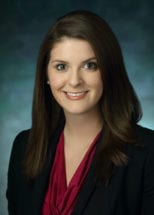
McKelvey was diagnosed with cancer when she was 13. She noticed it was getting more difficult for her to yell to her teammates on the basketball court. Doctors found a tumor sitting on the nerve feeding her vocal cords caused by thyroid cancer.
“Being diagnosed with cancer was a very pivotal event in my life, especially since I was a teenager, the time when you are trying to shape your identity. Cancer became a big part of my identity,” said McKelvey, who completed a Ph.D. at the Johns Hopkins University School of Medicine and is now a science policy fellow at the American Cancer Society. “My journey evolved from getting and fighting cancer within me into wanting to know everything I could about it.”
Now McKelvey’s goal has shifted from learning all about cancer at the cellular level to how scientific discoveries in the cancer field can prompt change on the broader population level.
“That’s where I saw policy as an exciting avenue. While those experiments, those discoveries and those papers coming from the lab are super exciting, if we can’t disseminate those advancements to a broader audience and impact change and regulations, those discoveries just sit idle.”
Passing comment
Dr. Baxley’s discovery that she wanted to go to medical school came during a chance meeting in a hallway in Long Hall on the campus of Clemson.
She had taken Dori Helms’ Biology 110 and Biology 111 classes and done well. Later, Baxley was walking down a hallway in Long Hall when she ran into Helms. Helms asked if she had thought about medical school.
“Just that one comment got me thinking,” she said. “Obviously, there was other thinking that went into it after that.”
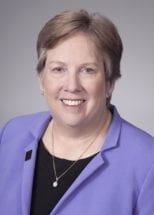
After Baxley graduated from USCSOM, she completed a family medicine residency at Anderson Family Medicine Residency in South Carolina. After she finished her residency, the only way she could continue delivering babies – a part of family medicine practice she loved – and remain in Anderson where they wanted to live – was to be a faculty member in the residency program.
“I had the chance to do a faculty development fellowship at UNC Chapel Hill to learn about the medical education and teaching aspect of my work. At the end of that, I realized I was getting to do exactly what I wanted to do in the beginning, which was teaching. I’ve stayed in academic medicine ever since,” Dr. Baxley said.
In her current role as Executive Vice President of the American Board of Family Medicine, Baxley plans, develops and implements initial and continuing board certification programs for nearly 100,000 family physicians in the U.S.
Universal language
After Bozeman moved with her family to Japan when she was in elementary school, she found herself thrown into a completely new environment – with a new school, new friends and a new language.
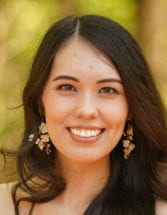
“The one thing that stayed constant during those big changes was math because it’s universal. You don’t really have to speak the language to do math,” she said.
Originally, she applied to Clemson as a general engineering major because she worried about the career opportunities available to math graduates. She discovered there were plenty.
In her job at SAS, Bozeman develops and teaches training courses.
“As a math major, we wrote a lot of proofs. That means you have to think through each step you do logically and not just make assumptions,” she said. “I am teaching programming concepts to people of all different skill levels, so I have to break it down and explain it in a way that makes sense to all different levels.”
Big mystery
When Lea Marcotulli started looking for master’s programs in astrophysics, one of her professors at the University of Bologna, Italy, handed her a book on black holes and told her to read the introduction to see if she liked the research. If she liked it, the professor said, she should apply to Clemson University.
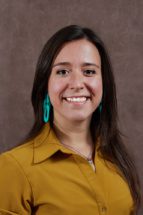
“I had to Google it on a map. Even the state of South Carolina was a bit of an unknown to me,” she said.
She applied to Clemson, where she researches the most distant and most powerful black holes to understand how they form and evolve.
“It was a sudden decision that I’ve never regretted. This department has an atmosphere of collaboration and friendship. It’s like a family,” said Marcotulli, who has earned a master’s degree in astrophysics from the College of Science’s Department of Physics and Astronomy and expects to earn her Ph.D. this spring.
“The research we do is extremely interesting and has a lot of avenues, and it allowed me to collaborate with many people, not just Clemson but other universities such as Yale and Stanford,” she said. “I am here in the first place because I was always told I could become anything I wanted to be, so I became an astrophysicist. I believe science does not discriminate, and I am committed in my future career to take steps toward making the scientific community more diverse and inclusive.”
The post Women in STEM: The stories of six Clemson science and mathematics alumni appeared first on Clemson News.

